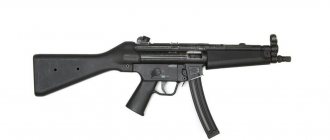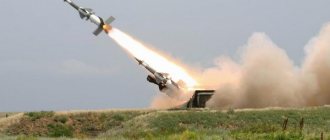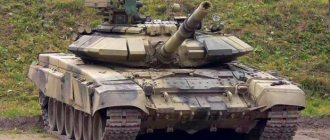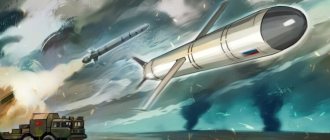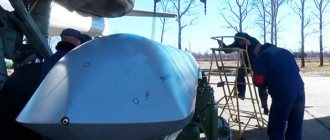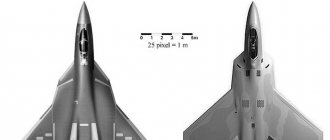In modern warfare, great importance is given to means of long-range destruction of the enemy, among which missiles have become the main one. This is why we can now see so much noise around the Intermediate-Range Nuclear Forces Treaty (INF Treaty), which was signed between the USSR and the USA under Gorbachev and obligated both sides to completely get rid of one of these types of weapons. 30 years after this, the United States, at the behest of Trump, decided to withdraw from the Treaty, in response to which V. Putin also announced that Russia was no longer going to comply with the terms of the INF Treaty and would develop its complex of medium- and short-range missiles. But if Russia has new missiles, and with what the country is going to enter into a new competition with the most powerful military-industrial complexes of NATO countries and China, remains a question.
Content
- 1 Equipment produced 1.1 Intercontinental ballistic missiles
- 1.2 Submarine-launched ballistic missiles
- 1.3 Operational-tactical missile systems
- 1.4 Tactical missile systems
- 1.5 Cruise missiles
- 1.6 Anti-aircraft missile systems
- 1.7 Anti-aircraft missile and gun systems
- 1.8 Coastal missile systems
- 1.9 Anti-ship missiles
- 1.10 Anti-submarine missiles
- 1.11 Guided air-to-air missiles
- 1.12 Guided air-to-surface missiles
- 1.13 Air-to-radar guided missiles
- 1.14 Surface-to-air guided missiles
- 1.15 Aircraft guided missiles
- 1.16 Submarine missiles
- 2.1 Intercontinental ballistic missiles
About sentimentality
Many other names of domestic military equipment are no less original and sometimes make you smile until you find out the characteristics and capabilities of the product. Sentimentality is also not alien to our military engineers.
Below is a list of romantic and slightly funny names of Russian weapons and military equipment:
- “Smile” is a direction-finding meteorological complex.
- "Laska" is a rocket with a 240 mm chemical warhead.
- “Ornament” is a 122-mm cluster rocket projectile of the 9M-22K type.
- "Excitement" is a thermobaric warhead.
- “Shalun” is a UAZ-3150 military vehicle.
- "Visit" - body armor.
- “Hello” is a 23 mm rubber ammunition.
- “Positive” is a shipborne radar station.
- Multiple flashbang grenade "Ecstasy".
- “Tenderness” - handcuffs.
- infantry shovel-grenade launcher "Option".
[edit] Produced equipment
Yars strategic nuclear missile system Iskander-M operational-tactical missile system S-400 anti-aircraft missile system Verba man-portable anti-aircraft missile system
[edit] Intercontinental ballistic missiles
Russia is producing the Yars ICBM.
[edit] Submarine ballistic missiles
Russia is producing the Bulava SLBM.
[edit] Operational-tactical missile systems
Russia is producing the Iskander-M operational-tactical missile system.
[edit] Tactical missile systems
Russia produces the Hermes tactical missile system.[2]
[edit] Cruise missiles
Russia produces Kalibr cruise missiles. They are equipped with the latest ultra-precise guidance system. Capable of hitting ships and ground targets.[3]
[edit] Anti-aircraft missile systems
Russia produces the S-400 air defense system, the Buk-M2 air defense system, the Tor-M2 air defense system, and the Verba MANPADS.
[edit] Anti-aircraft missile and gun systems
"Pantsir-S" is a Russian short-range anti-aircraft missile and gun system developed by the Tula Instrument Design Bureau. A multi-channel target acquisition and tracking system, rapid-fire guns and modern anti-aircraft missiles allow the Pantsir to destroy air targets within a radius of 20 and at an altitude of up to 15 km.[4]
[edit] Coastal missile systems
The production of coastal missile systems "Bal" and "Bastion" is underway.
[edit] Anti-ship missiles
Ship-borne missile systems are supplied to ships:[5]
- "Moskit-E" with high-speed anti-ship missiles 3M-80E (produced by the State Design Bureau "Raduga");
- "Uran-E" with standardized anti-ship missiles 3M-24E (produced by the parent company).
The parent company supplies anti-ship guided missiles of the Kh-35E type, unified according to carriers (ship, coastal and airborne).[6]
[edit] Anti-submarine missiles
SNPP "Region" produces the APR-3E (Orel-M) aircraft anti-submarine missile.[7]
[edit] Guided air-to-air missiles
GosMKB "Vympel" produces air-to-air guided missiles of various types:[8]
- close maneuver combat (short range) - R-73E (EL);
- medium and long range RVV-AE; R-27R1 (ER1); R-27P (EP); R-27T1 (ET1); R-33E.
[edit] Air-to-surface guided missiles
GosMKB "Vympel" supplies air-to-surface missiles.[9]
[edit] Air-to-radar guided missiles
State Design Bureau "Raduga" is creating the Kh-58E air-to-radar missile system.[10]
[edit] Surface-to-air guided missiles
GosMKB "Vympel" supplies surface-to-air missiles.[11]
[edit] Aircraft guided missiles
The parent company supplies high-speed aircraft guided missiles of the Kh-31 type in the anti-radar Kh-31P (Kh-31PK) and anti-ship Kh-31A versions.[12]
The State Design Bureau "Raduga" creates air-to-surface guided weapons - the OVOD-ME complex with the Kh-59ME missile, Kh-59MK extended-range guided missiles.[13]
[edit] Submarine missiles
SNPP "Region" produces a weapon system with a high-speed underwater missile (SPR) "Shkval-E".[14]
More about "flowers"
In the cool names of Russian weapons, gardening and berry themes occupy one of the leading places. Regarding missiles: in the American army anti-tank units are called “Bludge”, “Dragon”, as if everything is clear. Russian approach: “Malyutka” - 9M-14M missile, “Chrysanthemum” - 9M123. The Metis ATGM is equipped with an equally original (by name) night vision sight, the Mulatto. Some of the “garden” representatives of the Russian army are given below:
- “Hyacinth” is a self-propelled gun with a caliber of 152 millimeters; the second nickname, which more reflects the essence, is “Genocide”.
- Self-propelled gun "Pion" - equipped with a 203-mm cannon.
- "Gvozdika" - self-propelled gun 2S1.
- "Tulip" is a self-propelled mortar with a caliber of 240 mm.
- "Acacia" is a 2S3 type self-propelled gun.
- “Bouquet” are handcuffs used by guards to simultaneously escort five people.
The given list of names of Russian weapons is constantly updated, which cannot but please compatriots and once again make enemies shudder.
[edit] Prospects by type of equipment
[edit] Intercontinental ballistic missiles
Russia is developing the Sarmat heavy intercontinental ballistic missile. The Sarmat missile is being created to replace the R-36M2 Voevoda missile. Sarmat will become a fifth-generation missile with a powerful missile defense penetration system and hypersonic maneuvering warheads. The long flight range will allow the Sarmat to attack targets not along the shortest route, but along any route, including flight through the North and South Poles. The preparation time for a rocket launch will be significantly reduced - from 15 minutes to 60 seconds or less. The Sarmat launch silo will be equipped with an active protection complex, which will allow the missile to launch even after a nuclear attack.[15][16][17]
[edit] Coastal missile systems
It is planned to deploy the first silo version of the Bastion coastal missile system by 2022.[18]
[edit] Missile defense equipment
The promising A-235 Nudol missile defense system is being tested in Russia. The A-235 will be a classic duel version of the long-range interception missile defense system. As far as is known, test launches of missiles of the A-235 Nudol anti-missile system have been carried out since 2014 from the Plesetsk cosmodrome in the Arkhangelsk region. The anti-missile for Nudol is two-stage and solid propellant. The A-235 Nudol system has significantly better characteristics than the A-135 Amur missile defense system. This is a completely new system based on a new element base.[19]
[edit] SAM
S-500 “Prometheus” is a new generation anti-aircraft missile system developed by the Almaz-Antey air defense concern. The S-500 represents a new generation of anti-aircraft missile systems. The S-500 is not an upgrade of the existing S-400 system, it is a completely new development. In terms of its combat capabilities, this air defense system will significantly surpass the S-400 Triumph system in service and its foreign analogue, the American THAAD. According to information from open sources, the target detection range of the S-500 will be 200 km greater than that of the S-400, that is, approximately 800 km. In this complex, the principle of separately solving the problem of destroying ballistic and aerodynamic targets will be further developed. According to this principle, different types of missiles will be installed in identical-looking containers, which will make it possible for a single complex to hit any targets: not only airplanes and drones flying at any speed and at any altitude, but also medium-range missiles, hypersonic cruise missiles at higher speeds five speeds of sound and even the warhead of intercontinental ballistic missiles.[20]
Almaz-Antey is developing the S-350 Vityaz air defense system. The S-350 is being created to replace the early S-300PS and is a development of the solutions used (for the radar part) in the South Korean KM-SAM air defense system. The missile of the complex is 9M96.[21]
Almaz-Antey is developing the Morpheus short-range anti-aircraft complex.[22]
The S-500 air defense system should enter state tests by 2022.[23]
Features of the names of Russian weapons
In Russia, the principle of intimidation is somewhat veiled and is not always used. Many domestic engineers took a different path. They relied on wit, flirtatiousness and originality. Sometimes the opinion arises that the nicknames of self-propelled guns, mortars, MANPADS and even aircraft are a kind of mockery of a potential enemy. It would hardly surprise anyone if suddenly the developers and designers at one time took an active part in KVN.
For comparison: the Germans have the Leopard tank, France has the Leclerc, the Israeli army has the Merkava war chariot, and the Americans have the Abrams. As you can see, the names refer to animals or famous generals. In our army, the T-72B2 tank model is called “Slingshot”. Another example in the field of artillery. In the USA, the self-propelled artillery mount is called “Paladin”, among the British it is called “Archer”. Quite understandable and logical nicknames. If you pay attention to domestic analogues, there are often flower beds here: “Peonies”, “Acacias”, “Tulips”, “Carnations”, “Hyacinths”. It is unlikely that at least one potential enemy will like such a bouquet.
Health
Animals and flowers in the names of Russian weapons are far from the only themes. Military engineers have played up age-old health problems. So, in this direction the following types of weapons and equipment are presented:
- "Tonus" is a software and hardware station type 65S941.
- “Diagnoz” is a heavy transport complex R-410M.
- “Travmatizm” is a special medical vehicle for the Airborne Forces (BMM-1D).
- "Buynost" is an armored personnel carrier of the 80A configuration.
- "Fool" - Soviet atomic bomb RDS-7.
Logical interpretation of these terms
If we take the names of Russian weapons and military equipment seriously, then all these names are not without a logical chain. They are given not just out of the blue, but in connection with established traditions.
The following trends are visible:
- According to the project letters (S-200A - “Angara”, 200D - “Dubna”, 200B - “Vega” and so on).
- Taking into account the abbreviations displayed (the new weapon of ground artillery is “Nona”, the Kovrov gunsmiths from Degtyarevsk are “Kord”).
- In connection with research and development (for example, “Judge”, “Rook”).
- Serial features associated with natural phenomena - varieties of MLRS (“Tornado”, “Grad”, “Hurricane”).
- The flower line includes representatives of self-propelled guns (“Tulip”, “Carnation”, “Peony”).
- River direction – air defense systems (“Tunguska”, “Dvina”, “Neva”, “Shilka”).
- Means of camouflage and radio jamming (“Kikimora”, “Moshkara”, “Leshy”).
- Taking into account the clearly manifested action (“Hoarfrost”, “Sunshine”).
- Dynamic type protection (“Contact”).
- Soldier's humor - “Pinocchio” (TOS), “Foundling” (under-barrel grenade launcher), “Excitement” (infantry shovel), “Tenderness” (handcuffs).
- In honor of the designers or (T-90 tank), “Antey” (SAM).
Other "Western" nicknames
The domestic “nicknames” of our weapons have been sorted out. The names by which Russian military equipment is designated by NATO usually correspond to the initial letter designating a specific class of ground, surface, underwater or flying equipment. Below are a few Western-style nicknames.
Among them are many airplanes and helicopters:
- Flanker (hitting the flank) - from Su-27 to Su-35.
- Fullback (defender in football) – Su-34.
- Foxhound (fox hound) – MiG-31.
- Blinder (blinding) – Tu-22.
- Mitten (mitten) – Yak-130.
- Mainstay (base) – A-50.
- Midas (in honor of King Midas) - Il-78.
- Condor (condor) - An-124.
- Cub (puppy) – An-12.
- Hind (doe) – Mi-24.
- Havoc (devastator) – Mi-28.
- Hoodlom (hooligan) – Mi-26.
The potential enemy should be given their due: most of the names were chosen quite skillfully and accurately. But many experts are wondering why the Americans nicknamed the multifunctional armored attack aircraft Su-25 Frogfoot?
